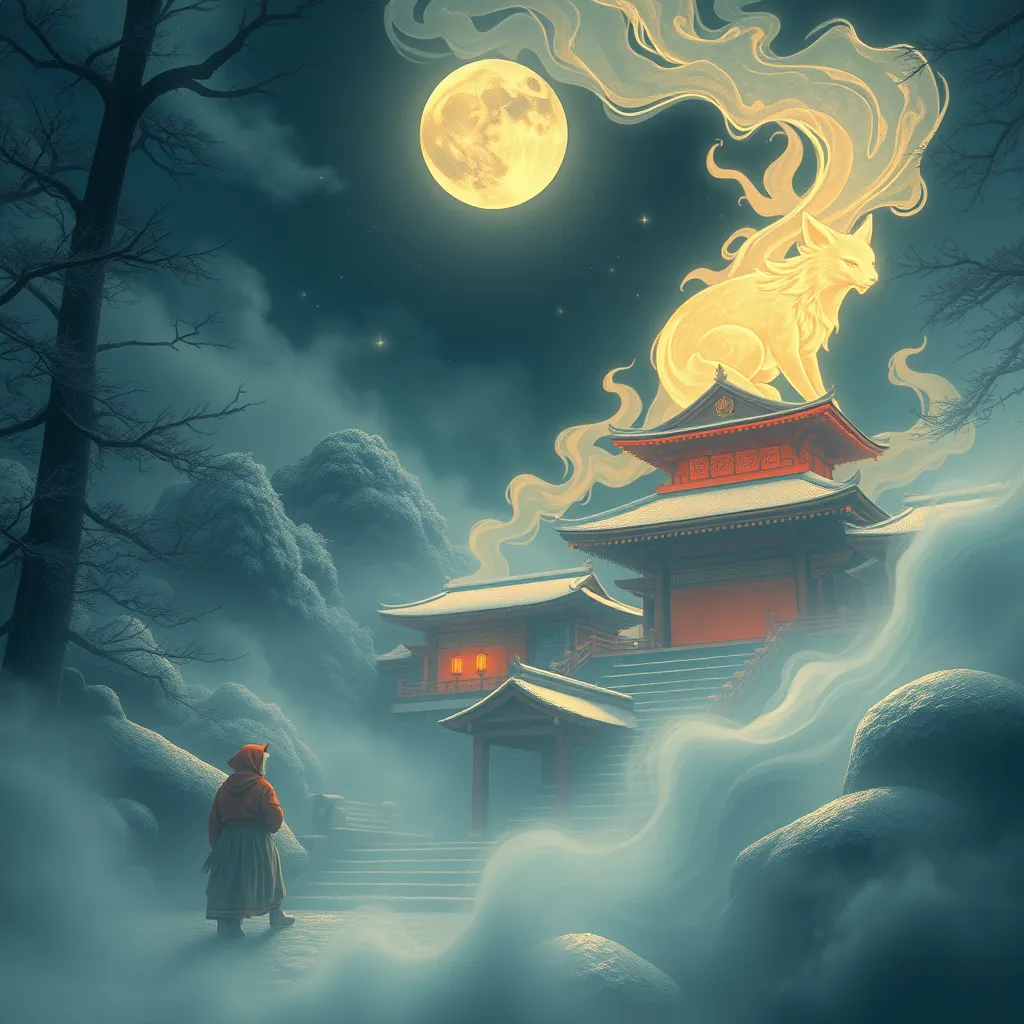Kitsune and the Sacred: The Fox Spirit’s Connection to Shrines and Temples
I. Introduction
Kitsune, the fox spirit of Japanese mythology, holds a revered place in the cultural and spiritual landscape of Japan. Often associated with the deity Inari, these mystical creatures embody a rich tapestry of symbolism, serving as messengers and protectors within Shinto practices. The importance of shrines and temples in Japan cannot be understated, as these sacred spaces are where the divine and the earthly intersect. This article aims to explore the profound connection between Kitsune and these sacred spaces, highlighting their role in Japanese spirituality.
II. The Nature of Kitsune: Mythology and Symbolism
Kitsune are often depicted as intelligent foxes with magical abilities, capable of shape-shifting and possessing profound wisdom. They are not merely animals; they are believed to be protectors and guardians of the sacred. In Japanese mythology, there are several types of Kitsune, each with distinct characteristics and roles:
- Inari Kitsune: Servants of Inari, the deity of rice and agriculture, these Kitsune are often seen at Inari shrines.
- Yoko: A type of Kitsune that is known for its malevolence and trickery, often embodying the darker aspects of the spirit world.
- Zenko: The benevolent foxes that are associated with good fortune and protection.
The symbolism of Kitsune extends beyond their physical representation. They embody the duality of nature, representing both good and evil, wisdom and folly, and the delicate balance between the human and spiritual realms. Their ability to shape-shift signifies adaptability and the complexity of existence, making them fascinating figures in Japanese lore.
III. The Role of Kitsune in Shinto Beliefs
Within Shinto beliefs, Kitsune play a vital role as messengers of Inari. They are seen as divine protectors of rice, agriculture, and prosperity, reflecting the agricultural roots of Japanese society. The spiritual significance of Kitsune in Shinto shrines is profound:
- Kitsune are often depicted in pairs at Inari shrines, symbolizing protection and guidance.
- The presence of Kitsune statues and offerings at these shrines highlights their role in connecting the community with the divine.
Moreover, Kitsune embody the duality of good and evil, illustrating the complex nature of existence and the need for balance in life. This duality is reflected in the rituals and practices associated with these sacred spaces, where believers seek both blessings and protection from malevolent forces.
IV. Shrines Dedicated to Kitsune
Japan is home to numerous shrines dedicated to Kitsune, with the most notable being the Fushimi Inari Taisha in Kyoto. This shrine is famous for its thousands of vermillion torii gates, each donated by individuals or businesses seeking Inari’s favor.
The architecture and design of Kitsune shrines often feature:
- Torii gates marking the entrance to sacred spaces.
- Fox statues, typically made of stone or bronze, symbolizing the presence of the Kitsune spirit.
- Offering boxes where visitors can leave food and coins for the fox spirits.
Rituals at Kitsune shrines include:
- Making offerings of rice and sake to appease the fox spirits.
- Participating in festivals such as the Inari Matsuri, celebrating the connection to agriculture and prosperity.
V. Kitsune in Temples: A Broader Spiritual Context
While Kitsune are primarily associated with Shinto shrines, their presence is also notable in Buddhist temples, highlighting the complex interplay between these two spiritual practices in Japan. The differences between Shinto shrines and Buddhist temples are significant:
- Shinto Shrines: Typically dedicated to kami (spirits), emphasizing the natural world and ancestral worship.
- Buddhist Temples: Focused on the teachings of Buddha, emphasizing meditation and enlightenment.
Despite these differences, Kitsune can be found in Buddhist iconography, often representing the merging of Shinto and Buddhist beliefs. In some temples, Kitsune are integrated into rituals, serving as protectors of the sacred space and participants in community ceremonies.
VI. Cultural Representations of Kitsune and Shrines
Kitsune have permeated Japanese culture beyond the realm of spirituality. They are featured prominently in folklore, literature, and art, symbolizing various themes such as transformation, loyalty, and the supernatural. In contemporary times, Kitsune have found their way into modern pop culture, appearing in:
- Animes and manga as characters embodying mystical powers.
- Video games, often depicted as guardians or antagonists.
- Fashion and merchandise, reflecting their popularity and cultural significance.
The evolution of Kitsune symbolism over time demonstrates their adaptability and relevance within Japanese society. From ancient protector spirits to modern cultural icons, Kitsune continue to capture the imagination and spirit of the people.
VII. Contemporary Practices: Reviving the Connection
In recent years, there has been a revival of interest in the rituals and festivals honoring Kitsune. Modern practitioners are finding new ways to connect with these ancient beliefs, incorporating them into contemporary spirituality. Some trends include:
- Hosting festivals that celebrate the relationship between Kitsune, agriculture, and community.
- Creating grassroots movements aimed at preserving traditional Kitsune practices and teachings.
- Integrating Kitsune symbolism into modern spiritual practices, emphasizing their role as guides and protectors.
VIII. Conclusion
The significance of Kitsune in relation to shrines and temples is profound, illustrating the enduring legacy of these fox spirits in Japanese culture. As messengers of Inari and guardians of sacred spaces, Kitsune embody the complex relationship between humanity and the divine. Their representation in folklore, art, and modern culture reflects a deep-seated reverence for these mystical beings and their connection to the sacred.
In reflecting on the spiritual connection between humanity and the sacred through Kitsune, one can appreciate the rich tapestry of beliefs that continue to thrive in Japan today. The legacy of Kitsune serves as a reminder of the importance of tradition, spirituality, and the ongoing dialogue between the human experience and the divine.



